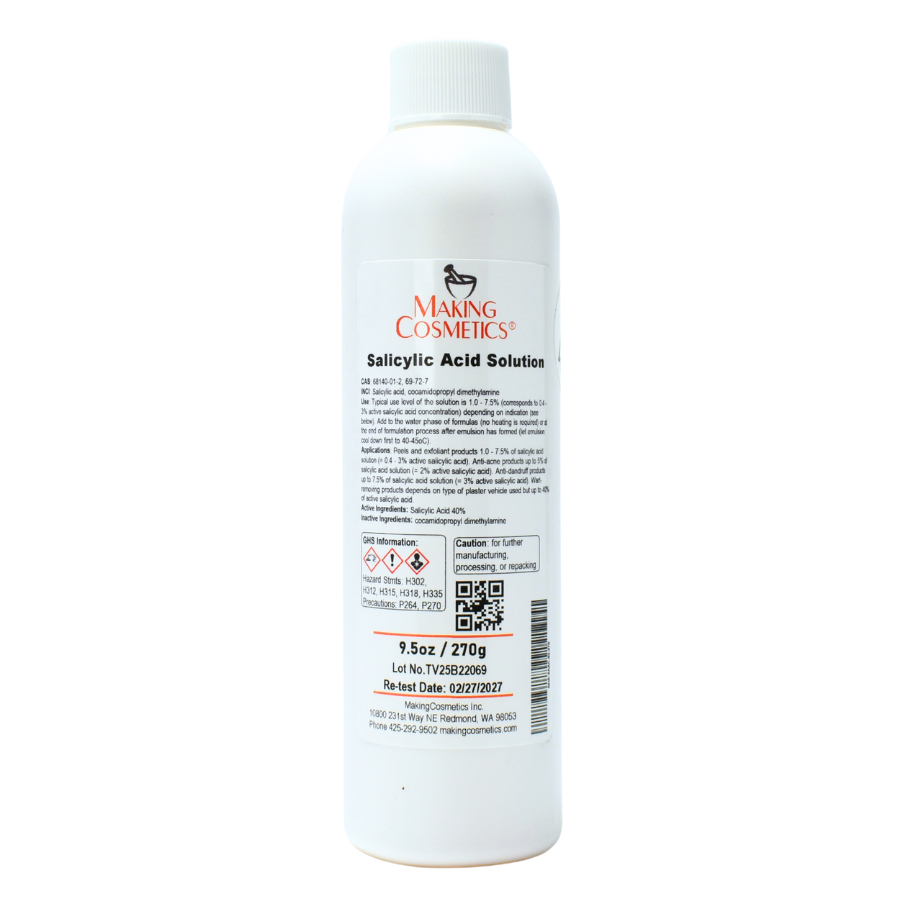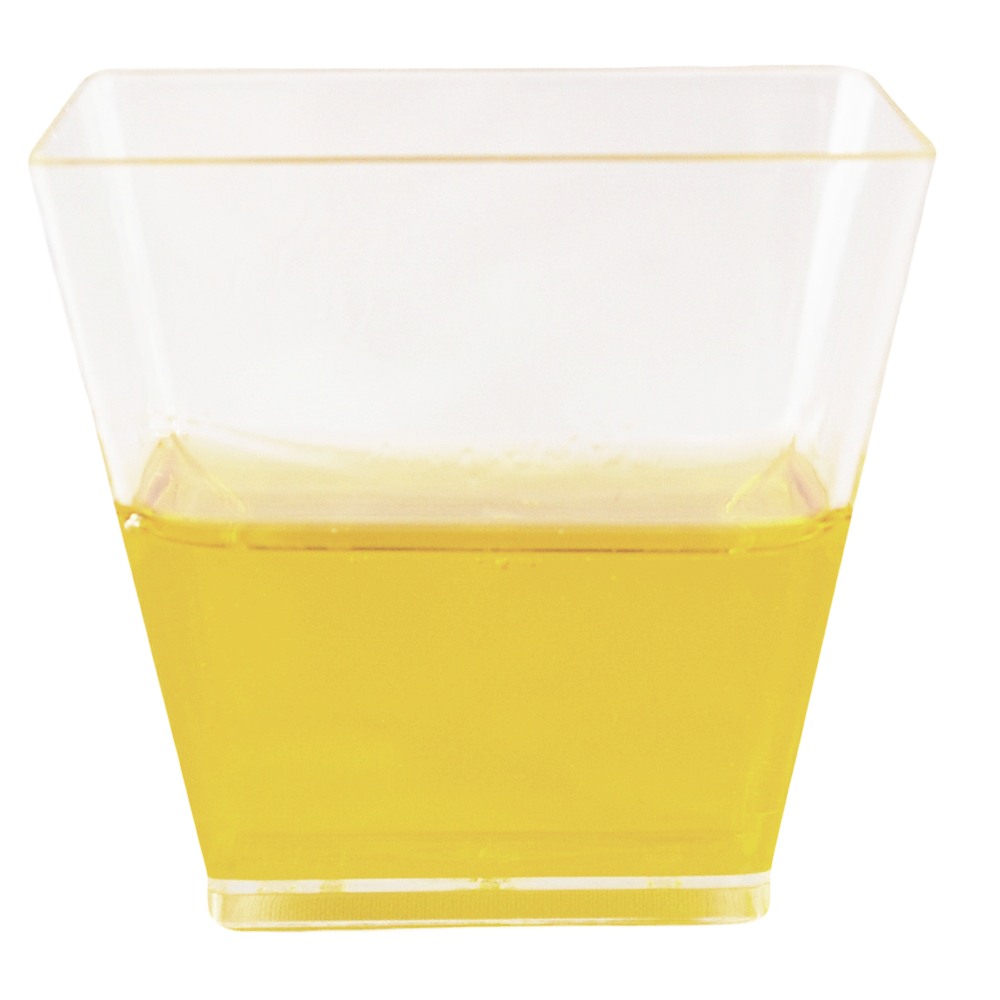INCI
Salicylic acid, cocamidopropyl dimethylamine
composition
Salicylic acid, cocamidopropyl dimethylamine
Purity Grade
No purity grade applicable
Appearance
Amber, viscous liquid, odorless
Solubility
Water-soluble (gives clear solutions)
Preservation
Preservative-free
Storage
Store light-protected at a cool and dry place
Raw Material Source
Sodium phenoxide and carbon dioxide.
Manufacture
Salicylic acid is prepared from dry sodium phenoxide in a stream of carbon dioxide. It is further purified by crystallizing the sodium salicylate from water at a temperature not exceeding 20 deg C. It is then dissolved in cocamidopropyl dimethylamine, an amidoamine-type emulsifier made from coconut oil.
Animal Testing
Not animal tested
GMO
GMO-free (does not contain plant-derived components)
Vegan
Does not contain animal-derived components
Precautions
Make sure that you measure the pH value after adding salicylic acid as it can lower the pH significantly. A pH of lower than 3.5 should be avoided as skin irritations can occur. To avoid excess peeling/irritation of the skin be careful when using salicylic acid together with abrasive soaps or cleansers, alcohol-containing products, or other topical acne or peeling products (e.g. benzoyl peroxide, resorcinol, sulfur, tretinoin), soaps or cosmetics that dry the skin.
Warning
Salicylic acid should be used with caution in patients with chronic renal (kidney) insufficiency, gastric ulcer, severe anemia, patients intolerant to salicylate or diabetes. Avoid prolonged and excessive use on large area of body or on broken or inflamed skin. Avoid contact with eyes, mouth or other mucous membrane. It should also be used with caution on extremities of patients with impaired peripheral circulation.
Regulatory Information
Salicylic acid is registered as OTC-drug with the FDA. This means that, if you want to sell products containing salicylic acid, your facility must be registered with the FDA and operate under cGMP guidelines.
Special Instructions
Make sure that you measure the pH value after adding salicylic acid as it can lower the pH significantly. A pH of lower than 3.5 should be avoided as skin irritations can occur. To avoid excess peeling/irritation of the skin be careful when using salicylic acid together with abrasive soaps or cleansers, alcohol-containing products, or other topical acne or peeling products (e.g. benzoyl peroxide, resorcinol, sulfur, tretinoin), soaps or cosmetics that dry the skin. Salicylic acid should be used with caution in patients with chronic renal (kidney) insufficiency, gastric ulcer, severe anemia, patients intolerant to salicylate or diabetes. Avoid prolonged and excessive use on large area of body or on broken or inflamed skin. Avoid contact with eyes, mouth or other mucous membrane. It should also be used with caution on extremities of patients with impaired peripheral circulation.

